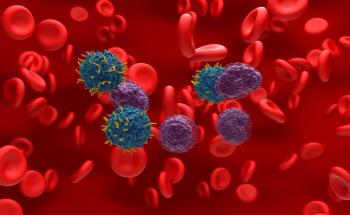
How Does Poor Sleep Quality Impact Migraine Severity?
Poor sleep quality may directly increase the headache-related impact in both patients with migraine and patients with tension-type headache, according to a study published in the Journal of Clinical Neurology. Poor sleep quality may also indirectly increase headache frequency and severity in patients with migraine.
Poor sleep quality may directly increase headache-related impact in both patients with
From October 2015 to May 2018, investigators analyzed the relationship between sleep quality and headache-related impact of 915 patients. The retrospective, cross-sectional analysis of a headache clinic registry in South Korea included 784 patients who suffered migraines and 131 who suffered TTH.
“Migraine and TTH are the most common primary headache disorders, with migraine affecting 14.4% of people worldwide and the prevalence of TTH ranging from 26.1% to 86.0% depending on the study population,” the authors said.
Poor sleep quality is more frequent in patients with migraine and TTH compared with the general population. “However, whether poor sleep quality affects the headache-related impact directly or indirectly via increases in the headache frequency and severity has not been previously reported,” researchers said.
Investigators used the Pittsburgh Sleep Quality Index (PSQI) and Headache Impact Test-6 (HIT-6) to gather information on headache frequency and severity, as well as individual psychological status. Direct and indirect effects were determined via path analyses using headache frequency and severity as covariates.
“Poor sleep quality may contribute to alterations in the neuroendocrine stress response system and metabolic activity during sleep, resulting in impaired daytime function,” the researchers said. “We hypothesized that this potential role of sleep—which induces an overall poor quality of life—also contributes to the headache-related impact.”
The PSQI consists of 19 questions evaluating and estimating sleep quality of the previous month. Responses are divided into 7 subcategories, and the sum of the 7 subitem scores are used to produce a subjective global sleep quality score, which from 0 to 21. Higher scores indicate worse subjective sleep quality. The HIT-6 assesses headache impact from the previous month, considering such factors such as pain; social, role, and cognitive functioning; psychological distress; and vitality.
Data showed participants with migraine tended to be younger and were more likely to be female compared to those with TTH.
Path analyses showed that in patients with migraine poor sleep quality exerted:
- A significant direct effect on the headache-related impact (β = 0.207; P <.001)
- Significant indirect effects mediated by headache frequency (β = 0.039; P = .004) and headache severity (β = 0.028; P = .004)
- A direct effect greater than the sum of the indirect effects (β = 0.207 vs 0.067)
In addition, among patients with migraine, “factors that were independently associated with a higher HIT-6 score in the multivariable linear analysis were the PSQI (β = 0.146; P = .001), headache frequency (β = 0.116; P = .003), and headache severity (β = 0.174; P <.001).”
Due to the fact that the study was cross-sectional, the researchers note path analyses results do not indicate causal relationships and future longitudinal studies ought to be carried out.
“Physicians should make efforts to improve the sleep quality in patients with primary headache disorders, since this would further improve the headache-related impact as well as the headache frequency and severity in migraine and TTH,” authors conclude.
Reference
Cho S, Lee MJ, Park HR, et al. Effect of sleep quality on headache-related impact in primary headache disordersJ Clin Neurol. 2020;16(2):237-244. doi: 10.3988/jcn.2020.16.2.237.
Newsletter
Stay ahead of policy, cost, and value—subscribe to AJMC for expert insights at the intersection of clinical care and health economics.














































